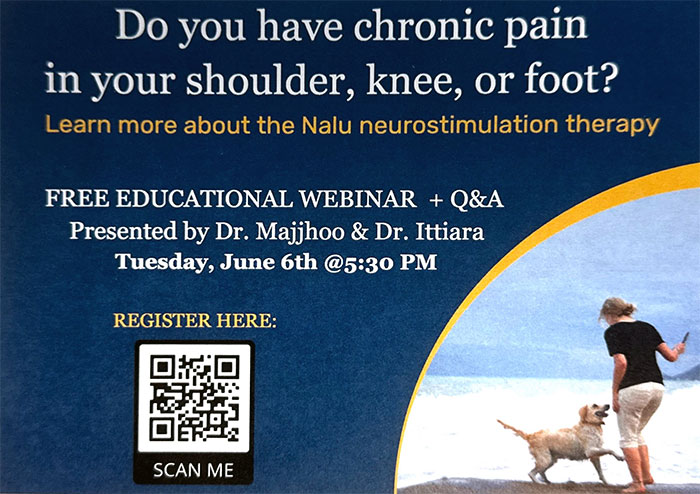FAQs on Degenerative Disc Disease
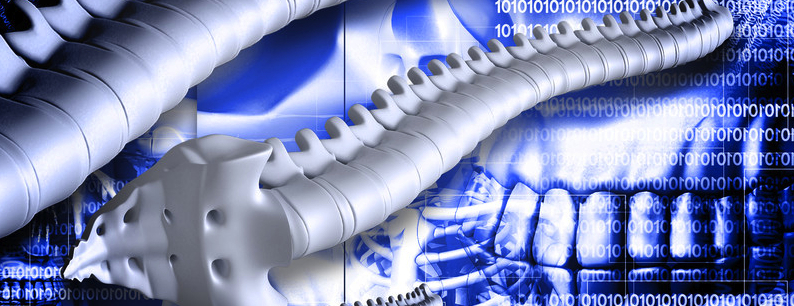 What is degenerative disc disease (DDD) and whom does it impact?
What is degenerative disc disease (DDD) and whom does it impact?
At some stage of everyone’s life, signs of wear-and-tear show up on the spine. Nearly everyone is affected by spinal disc degeneration, but not all people impacted by the condition will present symptoms. The discs are the soft tissue shock absorbers located between each bony vertebrae.
Degenerative disc disease, while not really a disease, is defined as a change in the spinal discs that occurs as a person ages. Everyone 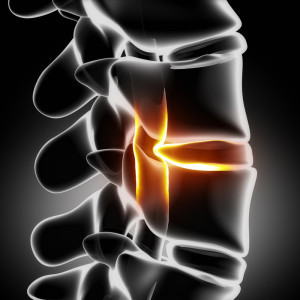 is susceptible to the condition, although there are contributing risk factors that make a person more likely to be impacted by the ‘disease.’
is susceptible to the condition, although there are contributing risk factors that make a person more likely to be impacted by the ‘disease.’
Degenerative disc disease can occur anywhere along the spine due to the shock absorbing nature of the discs that allow for flexibility and movement.
More commonly affecting the cervical spine (neck region) and the lumbar region (lower back), degenerative disc disease occurs when there is breakdown of tissue that would normally protect the joints in the spine. The degeneration of tissue or cartilage leads to significant pain and possibly even nerve damage.
What are the causes of degenerative disc disease?
As a person ages their bones and discs go through a degeneration process. The disc space is normally comprised of 80% water. With age, some of that water leaves the disc 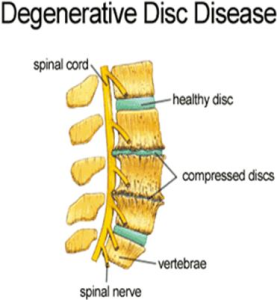 and degeneration occurs.
and degeneration occurs.
It is known that certain individuals have a genetic predisposition to disc disease. Other individuals work in jobs that entail repetitive stress, such as truck drivers and construction workers.
While there are helpful things to do to prevent severe degeneration, such as exercise, eat healthy and keep your weight level in the target range, everyone will go through some degeneration. Wear-and-tear on the spine, as a person ages is normal.
Degenerative Disc Disease may lead to:
- Injury – a herniated disc may develop as a result of an injury, or degeneration of the disc may make it susceptible to injury. A herniated disc is an abnormal bulging of the disc that breaks open, causing pain and potential nerve damage. The outer part of the disc (annulus fibrosus) has nerve endings and can feel pain. The inner part (nucleus pulposus) has no nerve endings.
- Osteoarthritis – this condition results as degenerative disc disease occurs and changes the way the spine sees force. The discs cannot absorb as much stresses as usual, so the joints start to see more and break down. The joints in the spine become vulnerable, causing pain and discomfort.
- Spinal stenosis – a narrowing of the open space in the spine is called spinal stenosis. The open space is what positions the spinal cord and when the space becomes narrowed, problems such as pain may arise. As the discs degenerate and lose height, they may pinch on nerve roots as they try to exit from the spine.
What are the symptoms associated with DDD?
Most people with degenerative disc disease have no pain at all and they don’t even know they have it. Studies in the 90′s showed that 40% of those over 40 had evidence of DDD on MRI but no back pain at all (Boden et al., Spine).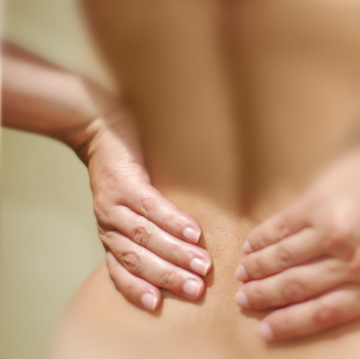
At times, people report pain that is severe enough to limit activities. It may wax and wane, or be present everyday. The pain often is situated in the low back and radiates into the buttocks or back of the legs.
Often times, sitting is worse than standing. Sitting places the most pressure on the intervertebral disc space, hence, this position makes the pain worse.
One reason the pain may exacerbate is when a tear occurs in the outer portion of the degenerated disc. It may flare up a nerve ending and be very uncomfortable for days to weeks and then “burn out”.
How is the condition diagnosed?
The most effective means for diagnosing this condition is a combination between physical examination and imaging tests. Your NIPM pain management doctor will initially gather a complete medical history and conduct a thorough physical examination of your spine.
For further investigation, x-rays and an MRI may be requested. The MRI is the best study to look for DDD, and often is able to show if there is a tear in the outer part of the disc and an associated disc herniation.
If an individual is failing conservative treatment, a discogram may be ordered. This study can help tell your pain doctor in Michigan if the disc is truly the source of back pain.
How can degenerative disc disease be treated?
Conservative treatment includes:
- Ice and/or Heat
- Anti-inflammatory drugs
- Physical therapy
- Exercise
- Chiropractic Treatment
- Spinal Decompression Therapy
- TENS Unit
- Trigger Point Injections
- Epidural Steroid Injections
- Intra-Discal Injections
- Facet Injections or Radiofrequency Ablation
- IDET – Intradiscal Electrothermal Treatment
- Nucleoplasty
IDET was extremely popular years ago. After multiple studies failed to show repeatable satisfactory results, it fell out of favor for DDD treatment. Nucleoplasty involves entering the disc and removing a bit to decrease intradiscal pressure. It has shown some promise.

Stem cell injections are being evaluated for use in DDD.
With regard to intradiscal injections, there have been some good results with steroid injections into the disc (Spine, 2004) and some new research is being performed looking at stem cell injections into the disc. Also platelet rich plasma is being evaluated for degenerative disc disease. This is one of the more exciting areas of pain management research. Steroid injections provide pain relief but do not repair the disc. There is the potential for stem cell injections and/or platelet rich plasma injections to repair the damage which is what makes them so exciting!
Spinal decompression therapy has shown excellent results for degenerative disc disease. It has been shown to produce excellent results in over 85% of patients. Trigger point injections may be very helpful for those individuals having an acute flareup with muscle spasms.
Epidural injections and facet blocks are not indicated for DDD by itself. However, a significant amount of the time there is inflammation of adjacent nerve roots or arthritis of the facet joints in conjunction. For these, they may help considerably.
Over 75% of those suffering from DDD are able to achieve a satisfactory level of baseline pain control and avoid surgery. As a last resort, an elective surgery can be performed which would be a spinal fusion or artificial disc replacement. This may work adequately in the lumbar spine, and a discogram is usually performed prior to confirm the disc is causing the patient’s pain. Neck surgery for DDD in the neck has been shown to not be a great idea.


